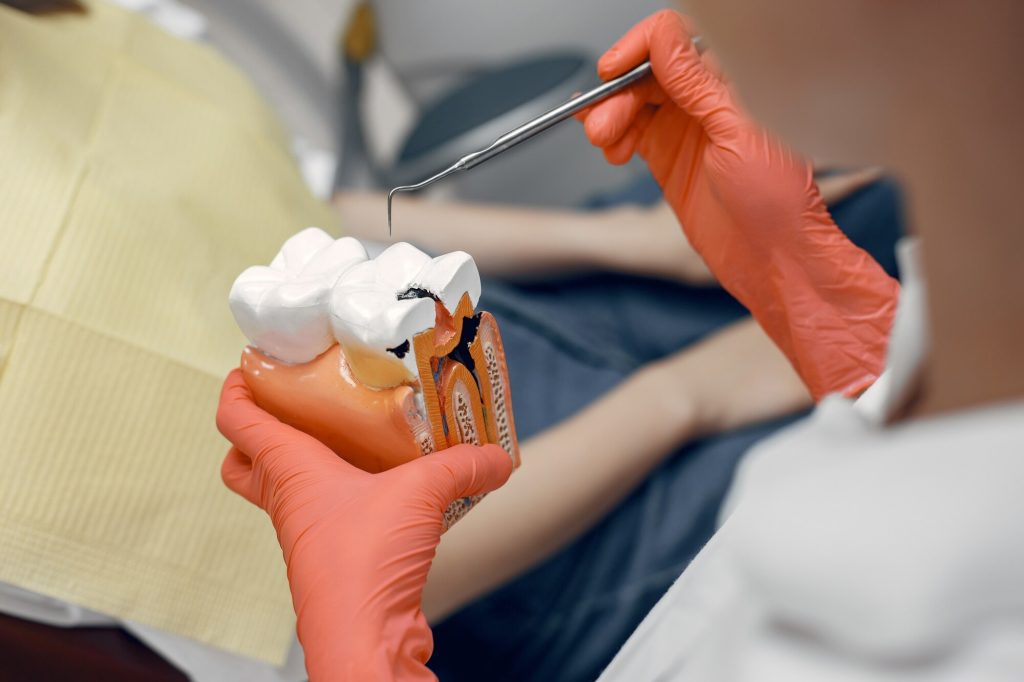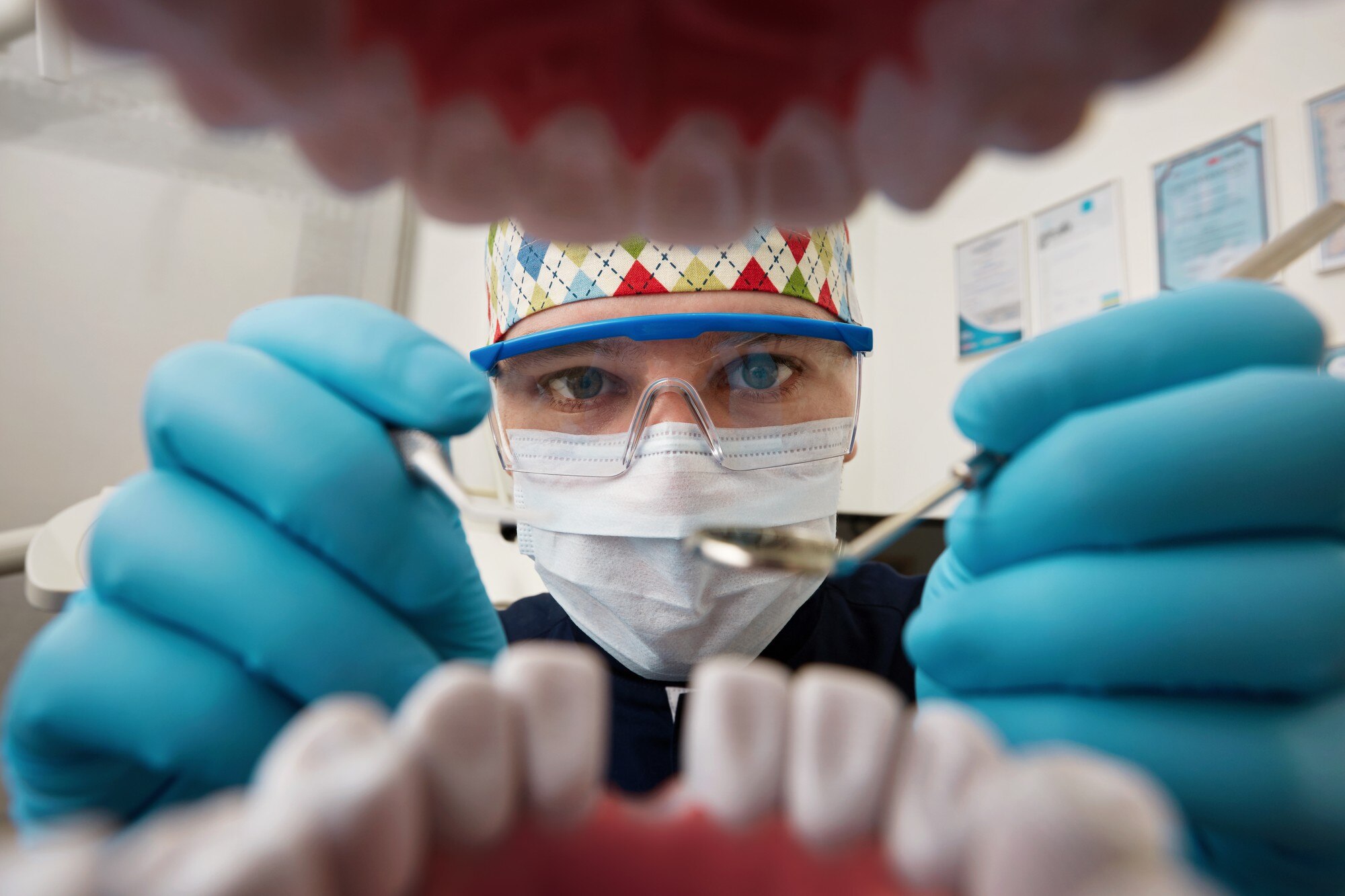Dental procedures can often be a source of anxiety for many.
One common concern is the level of discomfort associated with a crown replacement.
In this article, we aim to address this concern head-on. We’ll delve into the process of crown replacement, the pain associated with it, and how it can be managed.
Whether you’re considering a crown replacement, preparing for one, or simply curious about the procedure, this guide is for you.
We’ll provide expert insights and advice on what to expect during and after the procedure.
Our goal is to educate and reassure you, making your dental journey as comfortable as possible.
So, how painful is a crown replacement? Let’s find out.

Understanding Crown Replacement
Before we delve into the specifics of pain management, it’s crucial to understand what a crown replacement entails.
A dental crown is a cap-like structure that covers a damaged tooth.
What is a Dental Crown?
A dental crown is a prosthetic device used in dentistry.
It’s designed to encase the entire visible part of a tooth, restoring its shape, size, strength, and appearance.
Reasons for Crown Replacement
There are several reasons why a dental crown might need to be replaced.
These can include wear and tear, damage, or aesthetic concerns.
The Crown Replacement Procedure
The process of replacing a dental crown involves several steps.
First, the existing crown is carefully removed to avoid causing damage to the underlying tooth.
Next, the tooth is cleaned and reshaped to prepare it for the new crown.
The dentist then takes an impression of the tooth, which is used to create a custom-fit crown.
While the permanent crown is being made, a temporary crown is placed to protect the tooth.
Finally, once the permanent crown is ready, it’s cemented into place, completing the replacement process.
This procedure is typically performed under local anesthesia, which numbs the area and helps manage pain during the process.
Types of Dental Crowns and Comfort
There are several types of dental crowns, each made from different materials.
These include metal, porcelain-fused-to-metal, all-resin, all-ceramic, and zirconia.
Each material has its own set of advantages and disadvantages, and the choice often depends on the location of the tooth, the patient’s preference, and the dentist’s recommendation.
Metal crowns, for instance, are known for their durability but are not aesthetically pleasing.
Porcelain-fused-to-metal crowns, on the other hand, offer a balance between durability and aesthetics.
All-resin crowns are less expensive but wear down over time, while all-ceramic and zirconia crowns offer the best natural color match.
The type of crown used can impact the level of comfort experienced by the patient, both during the procedure and afterwards.
For example, a well-fitted crown made from a suitable material can reduce the likelihood of discomfort and crown replacement pain.
It’s important to discuss these options with your dentist to make an informed decision.
Managing Pain Before, During, and After Crown Replacement
Managing crown replacement pain involves steps taken before, during, and after the procedure.
Each stage plays a crucial role in ensuring a comfortable experience for the patient.
Pre-Procedure Considerations
Before the procedure, it’s important to discuss any concerns or fears with your dentist.
This can help them understand your pain threshold and anxiety level, allowing them to tailor their approach accordingly.
Anesthesia and Sedation Options
During the procedure, local anesthesia is typically used to numb the area around the tooth.
For patients with dental anxiety, sedation options may be available to help them relax.
Post-Procedure Pain Management
After the procedure, some level of discomfort is normal.
However, there are several strategies to manage this pain effectively:
- Over-the-counter pain relievers can be used to manage mild to moderate pain.
- Prescription pain medication may be necessary for severe pain, but should be used as directed by your dentist.
- Home remedies, such as a cold compress applied to the cheek, can help reduce swelling and discomfort.
- Rest and avoiding strenuous activity can also aid in recovery.
Remember, it’s important to follow your dentist’s post-procedure care instructions closely.
If pain persists or worsens, it’s crucial to contact your dentist as this could be a sign of complications.
What to Expect: During and After the Procedure
Understanding what to expect during and after a crown replacement can help alleviate anxiety and prepare you for the process.
This knowledge can also help you manage your recovery more effectively.
During the Procedure
During the procedure, your dentist will first remove the old crown.
Next, they will prepare the tooth for the new crown, which may involve reshaping the tooth and taking dental impressions.
After the Procedure: Healing and Recovery
Once the procedure is complete, you may feel some discomfort as the anesthesia wears off.
This is normal and can be managed with over-the-counter pain relievers or prescribed medication.
It’s also important to follow your dentist’s instructions for post-procedure care, which may include eating a soft diet, avoiding strenuous activity, and using a cold compress to reduce swelling.
Remember, healing takes time and patience is key.
If you experience severe pain, swelling, or other unusual symptoms, contact your dentist immediately.
When to Seek Help: Complications and Pain Assessment
After a crown replacement, it’s crucial to understand the difference between normal discomfort and signs of complications.
This knowledge can help you assess your pain and determine when to seek help.
Normal vs. Abnormal Pain
Normal pain after a crown replacement is usually mild to moderate and can be managed with over-the-counter pain relievers.
This discomfort should gradually decrease over a few days.
Signs of Complications
On the other hand, severe pain, increased swelling, or pain that worsens over time may indicate a complication.
Other signs of complications include fever, pus or discharge around the tooth, and an uneven bite.
If you experience any of these symptoms, contact your dentist immediately.
Prompt attention to these issues can prevent further complications and ensure a smooth recovery.
Tips for a Smooth Recovery
Recovering from a crown replacement doesn’t have to be a daunting process.
With the right care and attention, you can ensure a smooth and comfortable recovery.
Home Remedies and Care Instructions
There are several home remedies and care instructions that can help alleviate discomfort and promote healing.
These include:
- Using a cold compress on the cheek to reduce swelling.
- Rinsing the mouth with warm salt water to soothe the gums.
- Avoiding hard or crunchy foods that could irritate the area.
- Keeping the area clean by gently brushing and flossing.
Follow-Up Visits and Communication with Your Dentist
Regular follow-up visits are crucial to monitor your recovery and address any concerns.
Don’t hesitate to communicate any discomfort or concerns with your dentist – they are there to help ensure your recovery is as comfortable as possible.
Conclusion
Navigating the journey of a crown replacement can be a daunting task, but with the right information and preparation, it doesn’t have to be.
Remember, while some discomfort is normal, excessive or prolonged pain is not. Always communicate with your dentist about any concerns or discomfort you may be experiencing. With proper care and attention, you can ensure a smooth and comfortable recovery.









Leave a Reply